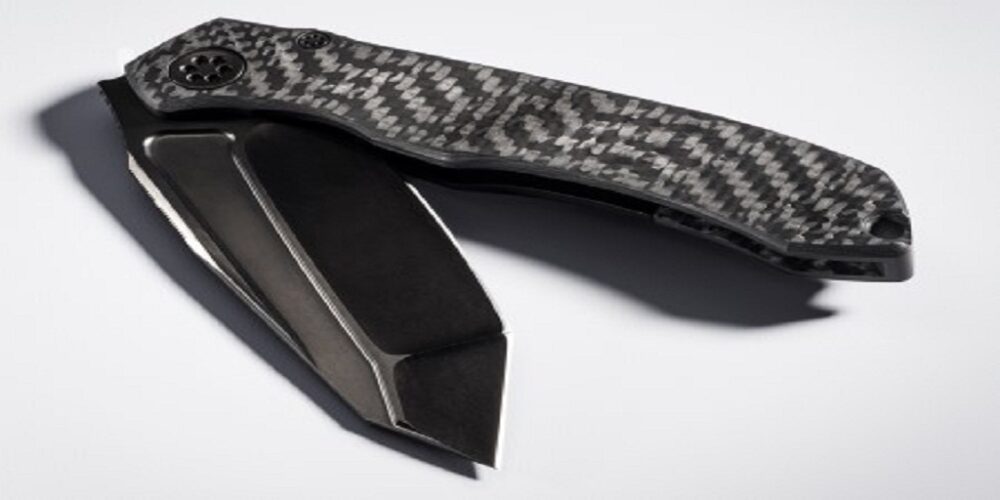For the longest time, knife handles (also known as scales on a knife with a fixed blade and full tang that accepts two “slabs” of handle material on either side) were made of natural materials.
Throughout history, knives have been handled with bone, ivory, wood, and stone. Some knives even have stacked leather grips. Many knives today still use natural materials in their construction. Some knives also have handles of stainless steel, titanium, or aluminum, which are also technically natural materials since they are not man made.
However, technological innovations have resulted in the use of synthetic materials in knife manufacturing. For instance, Buck Knife Company was one of the first of these, releasing its iconic 119 in 1942. The 119 featured a handle of a synthetic material known as phenolic and has remained in production with that synthetic handle ever since. Many knives today use the same.
Since then, the use of synthetic handle materials in knife manufacturing has proliferated. Today, many knives are made with G10, Micarta, fiberglass-reinforced nylon, and even carbon fiber scales.
Some are traditionalists and prefer knives with wooden scales or stacked leather handles. But it would be impossible to deny that carbon fiber knife handle material has its distinct advantages. Here’s what you need to know.
Advantages of Carbon Fiber Knife Handle Scales
Carbon fiber as a knife handle material is popular for many reasons, some of them aesthetic and others functional. These are among some of the most oft-cited benefits of carbon fiber handles:
● Uniqueness: Carbon fiber knife handle materials are available in a number of different weave patterns, giving each knife a unique sense of personality. Carbon fiber scales (also called CF by some collectors) are also highly reflective and light plays off of them beautifully. Carbon fiber scales are often also paired with inlays of precious and semi-precious metal, bone, mother-of-pearl, and other materials for their aesthetic charm.
● Strength: Carbon fiber is extremely strong. Some estimates place carbon fiber at 5 times the strength of steel. This of course varies according to the weave and density of the carbon fiber material, but it’s extremely strong nonetheless.
● Weight: Carbon fiber is 70% lighter than steel, 40% lighter than aluminum, and lighter than bone, most if not all woods, micarta, G10, and many other synthetics commonly used to create handles or scales for custom knives. This is a huge benefit for many people like backpackers who are always looking to shave ounces off of their pack loads.
● Resistance to the elements: Carbon fiber, which is cured with an epoxy resin, is highly resistant to heat, cold, water, weather, and other adverse conditions. It is also chemically stable, corrosion-resistant and certain carbon fiber epoxies are also UV-resistant.
● Carbon fiber is not absorbent: Carbon fiber will not absorb water or oil, which is a huge benefit to outdoorsmen like hunters, campers, and hikers. Since it won’t absorb water, blood, grease, or sweat, it is also easier to clean. This makes it a superior option for food preparation, hunting, or general outdoor use.
● Tactility: Slippery knife handles are always a concern. Some CF scales are treated with an epoxy resin that has a “grippy” finish that makes them surer in the hand, even when the scales are wet or the user’s hands are cold.
Where Can You Get Carbon Fiber Knife Handle Material?
Interested in investigating the possibility of creating knives that are completed with carbon fiber scales or handles? Protech Composites (ProtechComposites.com) produces a wide variety of carbon fiber knife handle materials that are guaranteed porosity-free and are produced precisely to your requirements in terms of thickness, weave, finish, and dimensions.
Visit their website via the link above or get in touch with them at 360-573-7800.












